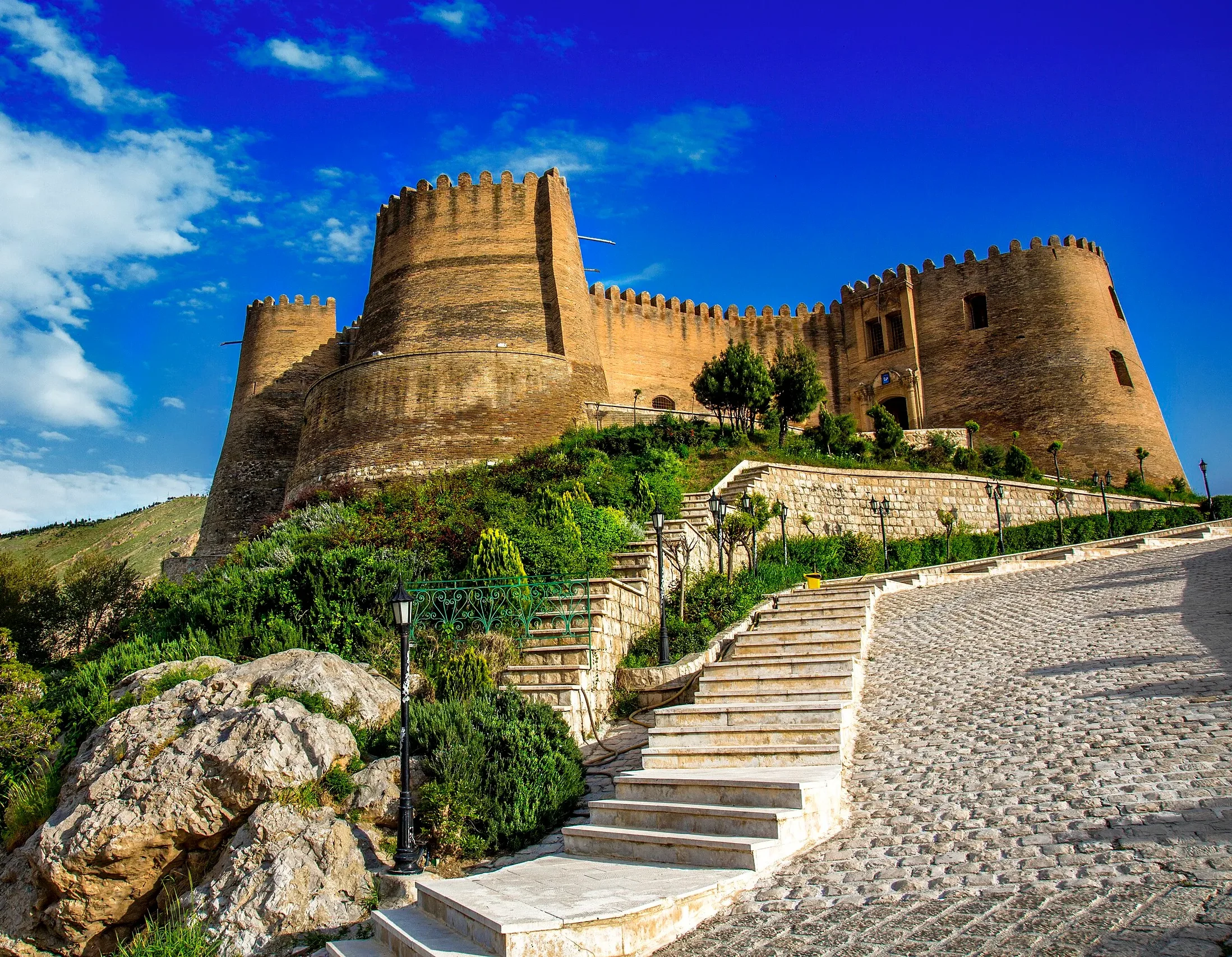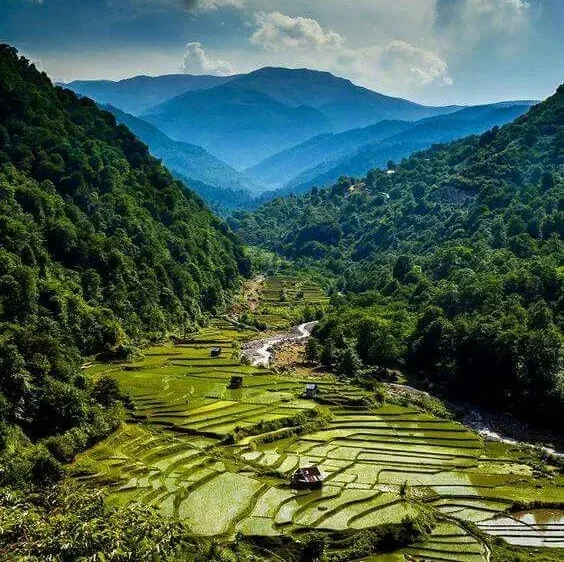West Azerbaijan: History, Nature, and the Taste of Life

- maryam jafary
- 16 August 2025
- Iran
- 3 minutes
West Azerbaijan is not just a border province of Iran—it is a land where history is alive, nature speaks through breathtaking landscapes, and diverse cultures captivate you with traditions, cuisine, and art. If you are planning to visit West Azerbaijan, prepare to discover a destination that is among the most fascinating of Iran’s tourist attractions and one of the most multicultural provinces in the country.
Geography, Ethnic Groups, and Languages
Where is West Azerbaijan?
Located in the northwest of Iran, West Azerbaijan shares borders with Turkey, Iraq, and the Republic of Azerbaijan. Its geography is defined by majestic mountains, fertile plains, and rivers, creating a four-season climate that welcomes travelers year-round.
Ethnic Groups in Iran’s West Azerbaijan
This province is a mosaic of cultures and languages. It is home to:
Azeri Turks, who form the majority in Urmia, Khoy, and Salmas, preserve the heart of Azerbaijani culture.
Kurds, who live in cities like Mahabad, Piranshahr, and Bukan, enrich the land with vibrant Kurdish traditions in Iran.
Armenians and Assyrians, whose churches, monasteries, and language make them an inseparable part of the cultural fabric.
West Azerbaijan proves that diversity can be a strength. Here, you’ll find Ramadan Iftar tables beside Christmas celebrations, Kurdish music harmonizing with Turkish Ashiq melodies, and ethnic groups sharing the same bazaars, villages, and traditions.
Historical and Cultural Treasures
Takht-e Soleyman
When it comes to places to visit in West Azerbaijan, few are as legendary as Takht-e Soleyman. This UNESCO World Heritage Site near Takab is one of the most important historical sites in Iran, with ties to Persian mythology. It is believed to have once been home to Prophet Solomon, and its deep central lake—its depth still unknown—adds a mysterious touch. The ruins include the Azargoshnasp Fire Temple and colossal Sassanid walls, making it a must-see attraction.

St. Stepanos Monastery
Near Jolfa, the St. Stepanos Monastery rises like a jewel along the Aras River. It is one of the most beautiful examples of Armenian Christian heritage in Iran. Its architecture, carvings, and peaceful surroundings make it one of the top reasons why Urmia tourism and the wider region are so popular among history lovers.

Zor Zor Church
West Azerbaijan is also home to the Zor Zor Church, a marvel of preservation. When the area was threatened by flooding, this centuries-old church was dismantled stone by stone and carefully rebuilt in a safe location—a feat of engineering that showcases Iran’s commitment to protecting its cultural legacy.

Urmia Bazaar and Cultural Handicrafts
For travelers, Urmia’s historic bazaar offers a living glimpse of Persian tradition. Wooden ceilings, the sound of coppersmiths hammering, and the scent of spices fill the air. Here, visitors encounter the heart of Azerbaijani rugs, Kurdish embroidery, Bukan knives, and pottery—masterpieces of craftsmanship that have made the province famous worldwide.
Nature, Cuisine, and Traditions
Lake Urmia and Natural Wonders
Despite ecological challenges, Lake Urmia remains Iran’s largest saltwater lake. Watching the sunset here is an experience every traveler should seek—it is nature’s own masterpiece. In spring, the plains of Mahabad, Piranshahr, and Naqadeh burst into life with wild tulips, anemones, and poppies, creating carpets of flowers that rival any painting.

Local Cuisine: Flavors That Tell Stories
West Azerbaijan’s cuisine is one of its greatest treasures, offering flavors shaped by ethnic diversity. Popular dishes include:
Ash-e Doogh (Urmia): A refreshing soup made from yogurt, herbs, and rice.
Koofteh Torsh (Mahabad): Meatballs flavored with walnuts and plums.
Kurdish Sour Kebab: Marinated meats cooked over charcoal with local herbs and sumac.
Khoy’s Yakhni (Meat Stew): A hearty stew with chunks of lamb, split peas, and potatoes.
These meals are often enjoyed with traditional drinks like herbal yogurt beverages, pennyroyal tea, or Urmia’s orange blossom syrup. Desserts such as walnut halva, basbousa (Turkish delight), and sugar-coated nuts (nougat) complete the culinary journey.
Souvenirs and the Art of Everyday Life
Visitors often ask what West Azerbaijan is famous for besides its landscapes. The answer lies in its souvenirs and handicrafts. The province is renowned for:
Azerbaijani rugs and kilims – intricate, colorful, and world-famous.
Kurdish embroidery – delicate needlework passed down through generations.
Handmade pottery and knives – particularly from Bukan.
Edible souvenirs – Urmia’s walnut halva, Sardasht honey, grape syrup, and dried fruits.

Each item is more than a product—it is a reflection of the people, their artistry, and their traditions. Today, authentic versions of these treasures are available globally through platforms like Persis Collection, which proudly connects international buyers with Iranian heritage.
Conclusion: Why You Should Visit West Azerbaijan
West Azerbaijan is not just a travel destination—it is a living storybook of history, nature, culture, and cuisine. In a single day, you can explore Takht-e Soleyman, stroll through Urmia Bazaar, admire the serenity of St. Stepanos Monastery, relax by Lake Urmia, and end your evening with the rich taste of Kurdish kebabs.
If you are looking for a province that combines the soul of ancient Persia with the warmth of its people, West Azerbaijan tourism offers an experience unlike anywhere else. It is one of those Iranian tourist attractions that will stay in your heart forever, leaving you with stories, flavors, and souvenirs that speak of a land between history, nature, and the taste of life.









Comments